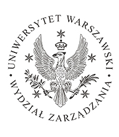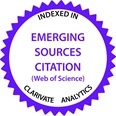Tytuł
Odkodowywanie nastrojów w komunikacji online: Analiza mediów społecznościowych firm z branży modowej
ORCID
Karolina Mania: 0000-0001-9063-7563
Monika Jedynak: 0000-0002-0167-5013
Aneta Kuźniarska: 0000-0002-2786-2781
Karolina Woszczyna: 0000-0001-6575-3669
Keywords
social media, communication, sentiment analysis, Facebook
Słowa kluczowe
social media, komunikacja, analiza sentymentu, Facebook
Abstract
Purpose: The aim of this article was to identify differences in the emotional tone of verbal messages published on the Facebook accounts of selected companies within the fashion industry, focusing on organizations with an active presence on this platform.
Design/methodology/approach: The sentiment analysis was conducted using the CLARIN software suite. Over a three-month period in 2023, companies’ posts and users’ comments were collected and analyzed. Sentiments were categorized into six groups: ambiguous statements, strong and weak negative statements, strong and weak positive statements, and neutral statements. Analysis was performed at sentence, document, and aspect levels, employing both lexicon-based methods and machine learning.
Findings: The results showed a preponderance of strong positive sentiment among the messages seen on the social media channels of the companies analyzed.
Research limitations/implications: The study was limited to a three-month data collection period and focused exclusively on organizations within the fashion industry with an active Facebook presence, which may limit the generalizability of the findings to other industries or platforms.
Originality/value: This study contributes to the understanding of how corporate communication on social media impacts its users, offering insights specifically into sentiment dynamics within the fashion industry.
Abstrakt
Cel: celem artykułu było zidentyfikowanie różnic w emocjonalnym tonie komunikatów werbalnych publikowanych na kontach badanych firm na Facebooku. Skupiono się na wybranych przedsiębiorstwach z branży modowej, ze szczególnym uwzględnieniem tych, które utrzymują aktywną obecność na Facebooku.
Projekt/metodologia: analiza sentymentu została przeprowadzona przy użyciu pakietu oprogramowania CLARIN. Przez trzymiesięczny okres 2023 roku, posty firm oraz komentarze użytkowników zostały zebrane i poddane dogłębnej analizie. Wyniki pozwoliły na kategoryzację sześciu grup odnoszących się do różnorodnych emocji uwidocznionych w komunikacji online. Analiza została przeprowadzona na poziomie treściowym z wykorzystaniem metod leksykalnych oraz uczenia maszynowego.
Wnioski: otrzymane wyniki wykazały przewagę silnych pozytywnych emocji wśród treści pochodzących z kanałów social media analizowanych firm.
Implikacje/ograniczenia badawcze: badania zostały ograniczone do trzymiesięcznego okresu zbierania danych i skoncentrowały się wyłącznie na przedsiębiorstwach z branży modowej, które aktywnie działają na Facebooku. Może to ograniczać możliwość uogólnienia wyników na inne branże lub platformy.
Oryginalność/wartość: niniejsze badania przyczyniają się do zrozumienia znaczenia i wpływu komunikacji w mediach społecznościowych organizacji na jej użytkowników, dostarczając szczegółowych wniosków dotyczących dynamiki sentymentów w branży modowej.
Acknowledgments
Funding
The article came into being within the project no. 2020/37/B/HS4/00360 entitled ‘Digital identity – organizational stakeholders engagement multilevel analysis’ financed by National Science Centre in the years 2021-2025.
Declaration of Conflicting Interests
The authors declare that there is no conflict of interest related to the research paper. The study was conducted without any financial or personal relationships that could be perceived as potentially influencing the research or its outcomes.
Declaration about the scope of AI utilisation
The authors used the AI tool ChatGPT to help check grammar (only) in the preparation of this articl e.
Recommended Citation
Mania, K., Jedynak, M., Kuźniarska, A., & Woszczyna, K. (2024). Decoding Sentiment in Online Communication: A Social Media Analysis of Fashion Companies. European Management Studies, 22(3), 4-21. https://doi.org/10.7172/2956-7602.105.1
First Page
4
Last Page
21
Page Count
18
Received Date
19.03.2024
Accepted Date
22.11.2024
Online Available Date
10.12.2024
DOI
10.7172/2956-7602.105.1
JEL Code
D83
Publisher
University of Warsaw








